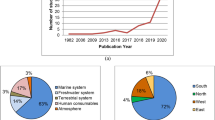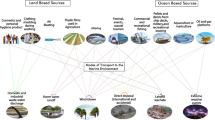Abstract
They not only directly impact aquatic organisms, but also indirectly impact these organisms by interacting with background toxins in the environment. Moreover, under realistic environmental conditions, algae, a natural food for aquatic organisms, may alter the toxicity pattern related to MPs. In this research, we first examined the toxicity of MPs alone, and their effect on the toxicity of lead (Pb) on Ceriodaphnia dubia (C. dubia), a model aquatic organism for toxicity survey. Then, we investigated the effect of algae on the combined toxicity of MPs and Pb. We observed that, MPs significantly increased Pb toxicity, which was related to the increase in soluble Pb concentration and the intake of Pb-loaded MPs, both of which increased the accumulation of Pb in C. dubia. The presence of algae mitigated the combined toxicity of MPs and Pb, although algae alone increased Pb accumulation. Therefore, the toxicity mitigation through algae uptake came from mechanisms other than Pb accumulation, which will need further investigation.

Similar content being viewed by others
References
Ab Latif Wani, Ara A, Usmani J A (2015). Lead toxicity: A review. Interdisciplinary Toxicology, 8(2): 55–64
Braakhuis HM, Cassee F R, Fokkens P H, de La Fonteyne L J, Oomen A G, Krystek P, De Jong W H, Van Loveren H, Park M V (2016). Identification of the appropriate dose metric for pulmonary inflammation of silver nanoparticles in an inhalation toxicity study. Nanotoxicology, 10(1): 63–73
Bray T M, Bettger W J (1990). The physiological role of zinc as an antioxidant. Free Radical Biology & Medicine, 8(3): 281–291
Chen Q, Gundlach M, Yang S, Jiang J, Velki M, Yin D, Hollert H (2017). Quantitative investigation of the mechanisms of microplastics and nanoplastics toward zebrafish larvae locomotor activity. Science of the Total Environment, 584–585: 1022–1031
Ebert D P (2005). Ecology, epidemiology, and evolution of parasitism in Daphnia. Bethesda, MD: National Library of Medicine (US), National Center for Biotechnology Information, [2005] ©2005
Elmore S (2007). Apoptosis: A review of programmed cell death. Toxicologic Pathology, 35(4): 495–516
EPA (2002). Methods for measuring the acute toxicity of effluents and receiving waters to freshwater and marine organisms. Washington DC: U.S. Environmental Protection Agency
Ercal N, Gurer-Orhan H, Aykin-Burns N (2001). Toxic metals and oxidative stress part I: Mechanisms involved in metal-induced oxidative damage. Current Topics in Medicinal Chemistry, 1(6): 529–539
Erten-Unal M, Wixson B G, Gale N, Pitt J L (1998). Evaluation of toxicity, bioavailability and speciation of lead, zinc and cadmium in mine/mill wastewaters. Chemical Speciation and Bioavailability, 10(2): 37–46
Escudero-García R, Espinoza-Estrada E, Tavera F (2013). Precipitation of lead species in a Pb–H2O system. Research Journal of Recent Sciences, 9(4): 1–8
Europe P (2018). Plastics-the facts 2018: An analysis of European latest plastics production, demand and waste data. Plastic Europe: 1–60
Geller W, Müller H (1981). The filtration apparatus of Cladocera: Filter mesh-sizes and their implications on food selectivity. Oecologia, 49(3): 316–321
Gillis P, Chow-Fraser P, Ranville J, Ross P, Wood C (2005). Daphnia need to be gut-cleared too: The effect of exposure to and ingestion of metal-contaminated sediment on the gut-clearance patterns of D. magna. Aquatic Toxicology (Amsterdam, Netherlands), 71(2): 143–154
Haegerbaeumer A, Mueller M T, Fueser H, Traunspurger W (2019). Impacts of micro-and nano-sized plastic particles on benthic invertebrates: A literature review and gap analysis. Frontiers in Environmental Science, 7: e17
Hu J, Wang D, Wang J, Wang J (2012). Toxicity of lead on Ceriodaphnia dubia in the presence of nano-CeO2 and nano-TiO2. Chemosphere, 89(5): 536–541
Jaikumar G, Baas J, Brun N R, Vijver M G, Bosker T (2018). Acute sensitivity of three Cladoceran species to different types of microplastics in combination with thermal stress. Environmental Pollution, 239: 733–740
Jaikumar G, Brun N R, Vijver M G, Bosker T (2019). Reproductive toxicity of primary and secondary microplastics to three Cladocerans during chronic exposure. Environmental Pollution, 249: 638–646
Johansen M P, Prentice E, Cresswell T, Howell N (2018). Initial data on adsorption of Cs and Sr to the surfaces of microplastics with biofilm. Journal of Environmental Radioactivity, 190–191: 130–133
Kazmiruk T, Kazmiruk V, Bendell L (2018). Abundance and distribution of microplastics within surface sediments of a key shellfish growing region of Canada. PLoS One, 13(5): e0196005
Kim D, Chae Y, An Y J (2017). Mixture toxicity of nickel and microplastics with different functional groups on Daphnia magna. Environmental Science & Technology, 51(21): 12852–12858
Korshin G V, Ferguson J F, Lancaster A N (2005). Influence of natural organic matter on the morphology of corroding lead surfaces and behavior of lead-containing particles. Water Research, 39(5): 811–818
Lambert S, Sinclair C J, Bradley E L, Boxall A B A (2013). Effects of environmental conditions on latex degradation in aquatic systems. Science of the Total Environment, 447: 225–234
Lee W S, Cho H J, Kim E, Huh Y H, Kim H J, Kim B, Kang T, Lee J S, Jeong J (2019). Bioaccumulation of polystyrene nanoplastics and their effect on the toxicity of Au ions in zebrafish embryos. Nanoscale, 11(7): 3173–3185
Liu X, Wang J, Huang Y W, Kong T (2019). Algae (Raphidocelis) reduce combined toxicity of nano-TiO2 and lead on C. dubia. Science of the Total Environment, 686: 246–253
Luo Z, Wang Z, Yan Y, Li J, Yan C, Xing B (2018). Titanium dioxide nanoparticles enhance inorganic arsenic bioavailability and methylation in two freshwater algae species. Environmental Pollution, 238: 631–637
Moltedo O, Verde C, Capasso A, Parisi E, Remondelli P, Bonatti S, Alvarez-Hernandez X, Glass J, Alvino C G, Leone A (2000). Zinc transport and metallothionein secretion in the intestinal human cell line Caco-2. Journal of Biological Chemistry, 275(41): 31819–31825
NIST (2012). NIST X-ray Photoelectron Spectroscopy Database, Version 4.1. Gaithersburg: National Institute of Standards and Technology
Poljsak B, Šuput D, Milisav I (2013). Achieving the balance between ROS and antioxidants: When to use the synthetic antioxidants. Oxidative Medicine and Cellular Longevity, 2013: e956792
Porter K G (1977). The plant-animal interface in freshwater ecosystems: Microscopic grazers feed differentially on planktonic algae and can influence their community structure and succession in ways that are analogous to the effects of herbivores on terrestrial plant communities. American Scientist, 65(2): 159–170
Romay C, Armesto J, Remirez D, Gonzalez R, Ledon N, Garcia I (1998). Antioxidant and anti-inflammatory properties of C-phycocyanin from blue-green algae. Inflammation Research, 47(1): 36–41
Town R M, Van Leeuwen H P, Blust R (2018). Biochemodynamic features of metal ions bound by micro-and nanoplastics in aquatic media. Frontiers in Chemistry, 6: e627
Turner A, Holmes L A (2015). Adsorption of trace metals by microplastic pellets in fresh water. Environmental Chemistry, 12(5): 600–610
Wang J, Li Y, Lu L, Zheng M, Zhang X, Tian H, Wang W, Ru S (2019). Polystyrene microplastics cause tissue damages, sex-specific reproductive disruption and transgenerational effects in marine medaka (Oryzias melastigma). Environmental Pollution, 254: 113024
Yu F, Yang C, Zhu Z, Bai X, Ma J (2019). Adsorption behavior of organic pollutants and metals on micro/nanoplastics in the aquatic environment. Science of the Total Environment, 694: 133643
Zhang C, Chen X, Wang J, Tan L (2017). Toxic effects of microplastic on marine microalgae Skeletonema costatum: Interactions between microplastic and algae. Environmental Pollution, 220: 1282–1288
Zhang R, Zhang D, Mao H, Song W, Gao G, Liu F (2006). Preparation and characterization of Ag/AgO nanoshells on carboxylated polystyrene latex particles. Journal of Materials Research, 21(2): 349–354
Ziajahromi S, Kumar A, Neale P A, Leusch F D (2017). Impact of microplastic beads and fibers on waterflea (Ceriodaphnia dubia) survival, growth, and reproduction: Implications of single and mixture exposures. Environmental Science & Technology, 51(22), 13397–13406
Acknowledgements
Authors appreciate the facility support from the Center for Research in Energy and Environment (CREE) at Missouri S&T, and the help from Xiaolong He and Shuo Yang from the Chemistry Department at Missouri S&T, for TOC analysis and SEM image.
Author information
Authors and Affiliations
Corresponding author
Additional information
Highlights
• Micro-plastics (MPs) significantly increase Pb toxicity.
• Algae reduce the combined toxicity of MP and Pb.
• The toxicity increase comes from high soluble Pb and MP-Pb uptake.
• The toxicity reduction might come from energy related pathway.
Rights and permissions
About this article
Cite this article
Liu, X., Wang, J. Algae (Raphidocelis subcapitata) mitigate combined toxicity of microplastic and lead on Ceriodaphnia dubia. Front. Environ. Sci. Eng. 14, 97 (2020). https://doi.org/10.1007/s11783-020-1276-3
Received:
Revised:
Accepted:
Published:
DOI: https://doi.org/10.1007/s11783-020-1276-3




